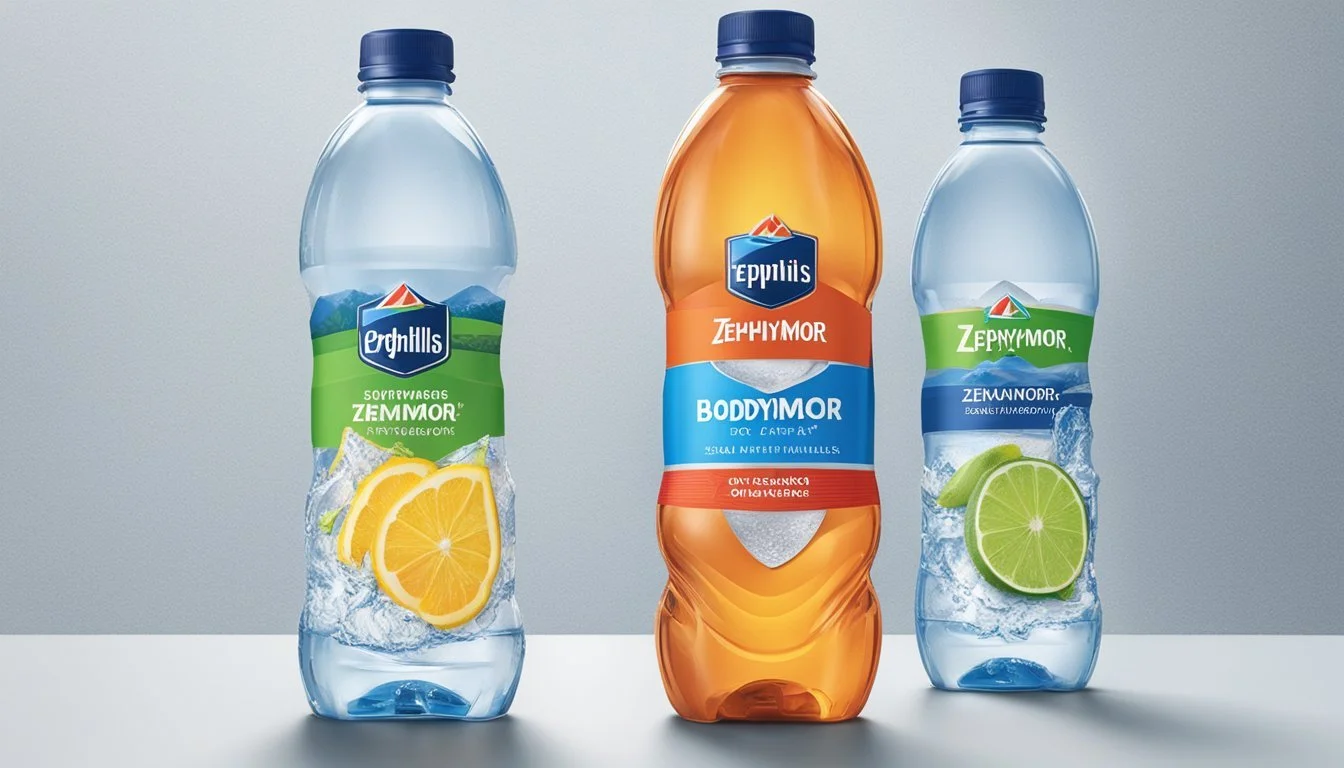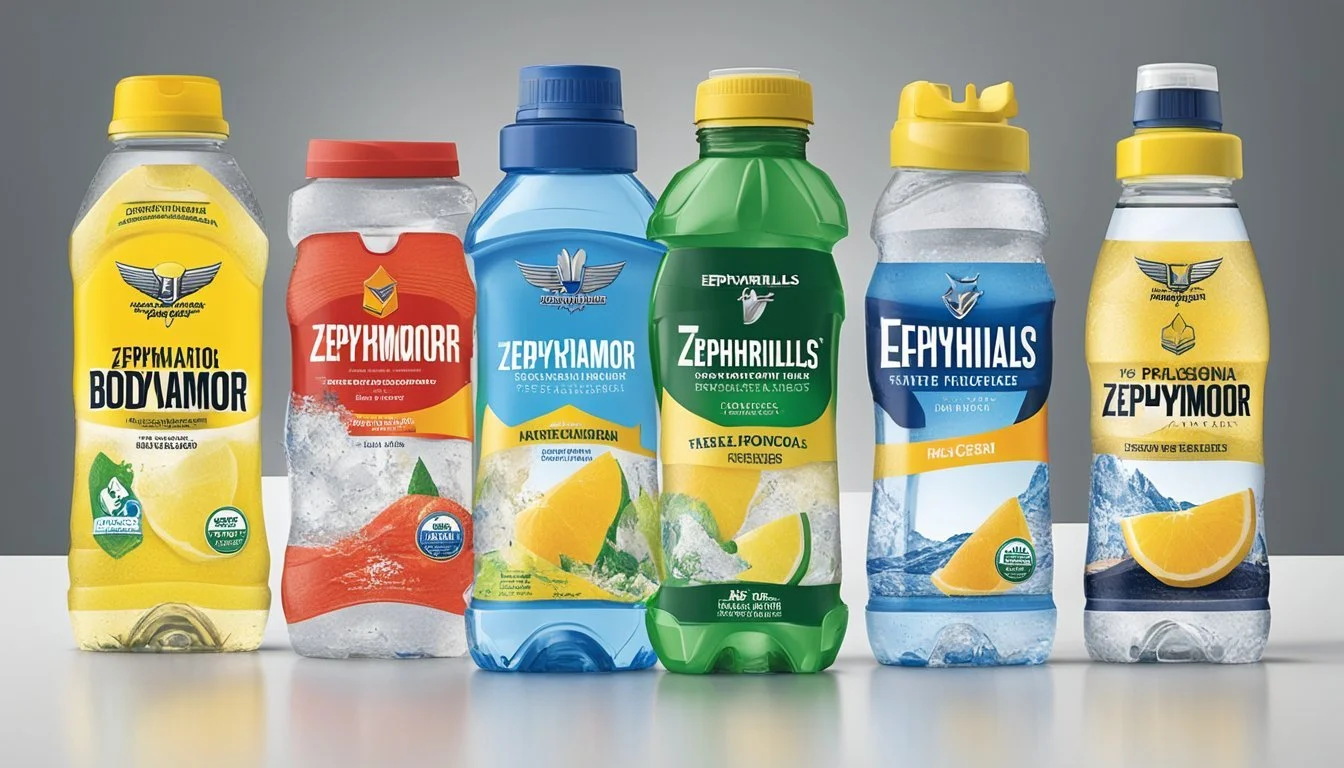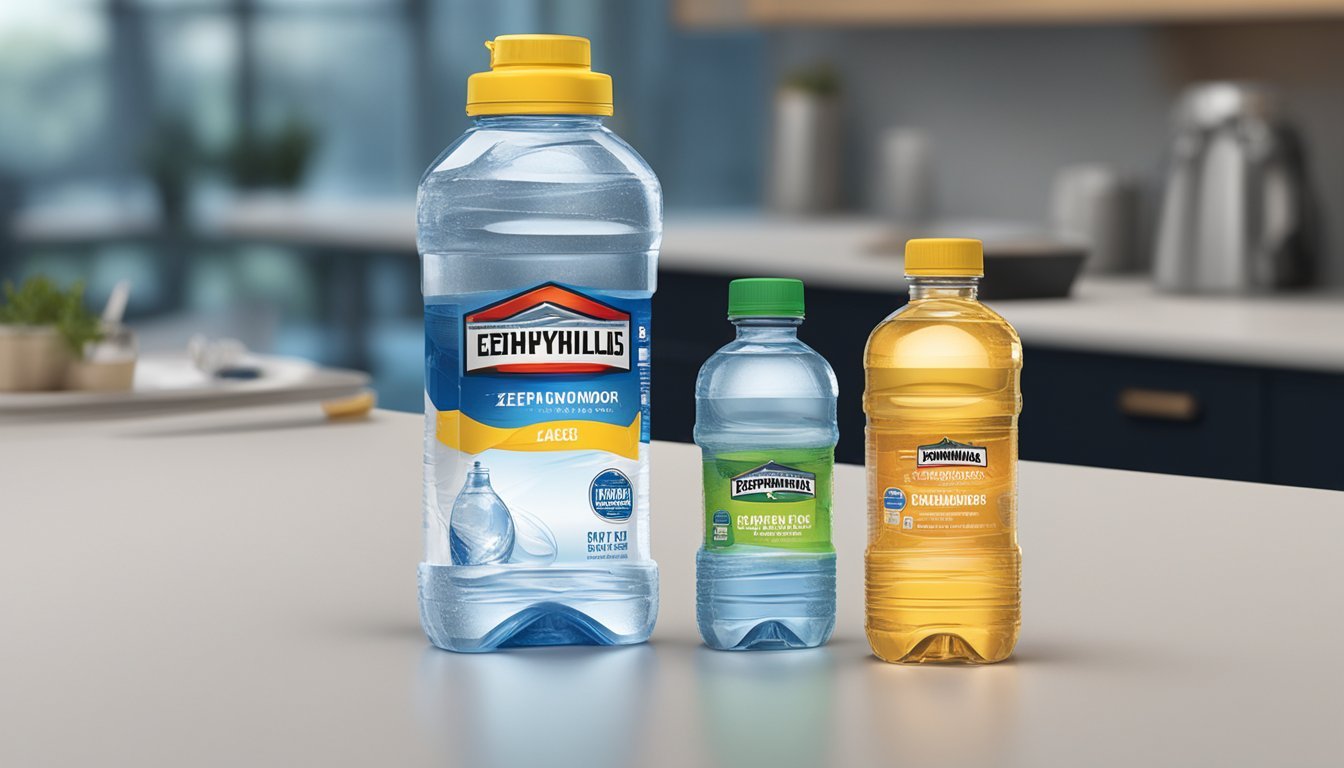Zephyrhills vs. BodyArmor
A Comprehensive Bottled Water Comparison
When it comes to choosing between Zephyrhills and BodyArmor bottled water, consumers often have distinct preferences based on taste, composition, and overall health benefits. Zephyrhills, sourced from natural springs in Florida, offers naturally occurring minerals like calcium and magnesium, which many find refreshing and beneficial. BodyArmor, on the other hand, adds electrolytes and minerals to its water, touting enhanced hydration and a more balanced pH.
Zephyrhills prides itself on its natural origin and the purity of its content. The naturally filtered water typically appeals to those who prioritize minimally processed drinking water. BodyArmor seeks to attract fitness enthusiasts and those looking for added nutritional benefits in their hydration choices, posing a different value through its enhanced mineral content.
Both brands cater to different needs, making the choice largely dependent on the consumer's lifestyle and preferences. Those searching for untouched, natural hydration might lean towards Zephyrhills, while those looking for a functional beverage to support an active lifestyle might find BodyArmor to be the superior option.
Overview of Bottled Water Industry
The bottled water industry has seen significant growth and transformation in recent years. This section will cover the historical evolution of bottled water, identify key market players, and highlight consumer preferences and trends affecting the industry.
Evolution of Bottled Water
Bottled water has evolved from a luxury item in the late 19th century to a commonplace product found in households around the world. Early bottling methods were rudimentary, and the product was marketed primarily for its perceived health benefits. The late 20th century marked a significant shift as advances in plastic manufacturing made bottled water more accessible. Brands like Evian and Perrier became household names, often associated with purity and status. The turn of the 21st century saw a boom in bottled water consumption, driven by increased health awareness and a shifting preference away from sugary drinks.
Key Players in the Market
The market is dominated by several major brands, each with distinct marketing strategies and product offerings. Nestlé Waters, with brands such as Perrier and San Pellegrino, owns a significant share. Coca-Cola and PepsiCo also play vital roles with their brands, Dasani and Aquafina, respectively. Regional brands like Zephyrhills in the United States offer localized options. Emerging eco-friendly brands like Boxed Water highlight sustainability efforts. The international presence of these companies underscores the global demand and varied consumer preferences within the bottled water industry.
Consumer Preferences and Trends
Consumer preferences have shifted towards more health-conscious and environmentally sustainable options. There is a rising demand for natural spring water, and many consumers now prefer minimally processed options. Additionally, the sustainability of packaging has become a significant concern. Eco-conscious brands that offer recyclable or biodegradable packaging are gaining popularity. Factors such as taste, purity, and brand reputation continue to influence consumer choices. Bottled water remains a preferred beverage due to its perceived purity and convenience, despite growing awareness and criticism regarding its environmental impact.
The bottled water industry continues to adapt, reflecting broader trends in health, environmental consciousness, and consumer behavior.
Understanding Water Sources and Types
Exploring the different water types and their sources is crucial for making an informed choice between Zephyrhills and BodyArmor. Key differences in spring, purified, mineral, and alkaline water, as well as the role of aquifers and natural springs, impact quality and taste.
Defining Spring Water and Purified Water
Spring Water comes from underground formations and flows naturally to the surface. It retains its natural mineral content, making it highly sought after for its taste and perceived health benefits. Zephyrhills, for example, sources its water from Florida springs.
Purified Water, on the other hand, goes through extensive cleaning processes, including distillation, deionization, or reverse osmosis, to remove impurities and contaminants. BodyArmor uses such methods to ensure high purity levels. While purified water tends to have fewer minerals, its cleanliness is often highlighted as a key benefit.
Mineral Water vs Alkaline Water
Mineral Water comes from mineral springs and contains added minerals like calcium, magnesium, and potassium, which can enhance its taste and provide health benefits. Natural mineral content must be present at a minimum of 250 parts per million (ppm).
Alkaline Water boasts a higher pH level, usually above 8, which can be achieved naturally or through ionization. Proponents argue that alkaline water can neutralize acid in the bloodstream, although scientific backing varies. Its taste might differ from regular tap water or spring water due to the altered pH and added minerals.
The Significance of Aquifers and Natural Springs
An aquifer is a body of permeable rock that can contain or transmit groundwater. Water from aquifers is often tapped for spring water extraction, such as in the case of Zephyrhills. Natural springs and aquifers are valued for their consistent and naturally filtered water supply.
Natural Springs serve as the source for many bottled spring waters. Water that comes directly from these springs is often deemed superior due to its natural filtration as it moves through rock layers, gathering minerals. This can contribute to a more refreshing taste and is a key point for brands like Zephyrhills that capitalize on the purity and natural flavor of spring water.
Inspection of Zephyrhills and BodyArmor
Zephyrhills and BodyArmor are prominent brands in the bottled water market, each with unique origins and offerings.
Origin and Brand Profiles
Zephyrhills:
Originates from the natural springs in Zephyrhills, Florida.
Established as a brand emphasizing natural spring water with a focus on maintaining purity and natural mineral content.
Owned by BlueTriton Brands, a company known for its many bottled water brands.
BodyArmor:
A relatively newer brand associated with sports and fitness.
Created by Mike Repole and Lance Collins in 2011.
Marketed as a premium sports drink rather than traditional bottled water, with hydration through added electrolytes and vitamins to cater to athletes and active individuals.
Product Offerings
Zephyrhills:
Offers natural spring water from protected springs.
Comes in various bottle sizes ranging from small 8 oz bottles to larger gallon containers.
Emphasizes its naturally occurring minerals and a balanced pH level suitable for everyday hydration.
BodyArmor:
Known for its sports hydration drinks, BodyArmor offers products with added electrolytes and vitamins.
Varieties include the standard BodyArmor, BodyArmor Lyte (low in calories), and BodyArmor SportWater, which is enhanced with a performance-focused formula.
The SportWater is specifically designed to support athletic performance with high pH and added electrolytes.
Health and Hydration
Zephyrhills and BodyArmor both emphasize the importance of hydration and providing essential minerals for health. This section will evaluate their electrolytes, hydration potential, and adherence to safety standards.
Electrolytes and Mineral Content
Electrolytes such as sodium, calcium, potassium, and magnesium are crucial for various bodily functions. BodyArmor is known for its balanced blend of electrolytes, enhancing its appeal to athletes. It includes these elements to aid in muscle function and nerve signaling.
Zephyrhills natural spring water, sourced from Florida springs, contains naturally occurring minerals. It may not have as high an electrolyte content as BodyArmor, but it provides a refreshing, clean drinking option.
Mineral BodyArmor (per serving) Zephyrhills (varies naturally) Sodium Moderate Low Calcium 20 mg Trace amounts Potassium 300 mg Trace amounts Magnesium 10 mg Trace amounts
Hydration and Body Performance
Hydration is key for maintaining peak physical performance. BodyArmor focuses on high hydration levels suitable for sports and intense activities. Its higher electrolyte content ensures better water retention and quicker recovery times during high-intensity workouts.
Zephyrhills, although lower in added electrolytes, offers excellent hydration for everyday activities. Its naturally low mineral content makes it a light, easy-to-drink choice without the flavor alterations seen in electrolyte-added beverages. Both waters replenish body fluids effectively but target different hydration needs.
Water Safety and Regulatory Standards
Safety and regulation are paramount when it comes to bottled water. The Food and Drug Administration (FDA) oversees the standards to ensure consumer safety. BodyArmor and Zephyrhills meet these rigorous standards, ensuring the water sold is safe for consumption.
BodyArmor undergoes additional purification processes to achieve its unique blend. Zephyrhills, being natural spring water, is subject to consistent quality checks. Their commitment to safety and compliance with FDA regulations guarantees clean drinking water for consumers. Each brand adheres to safety standards, but their sourcing and processing methods reflect their unique characteristics.
Taste Profiles and Consumer Experience
When comparing Zephyrhills and BodyArmor bottled water, several factors influence their taste profiles and how consumers perceive these differences. Key aspects include the water's mineral balance and results from consumer taste tests.
Factors Affecting Water Taste
The taste of bottled water is influenced by its source and the filtration process used. Zephyrhills, sourced from natural springs in Florida, retains a distinct mineral signature. BodyArmor, known for its advanced filtration, offers a different taste experience aimed at purity.
Other influencing factors include temperature, bottling process, and packaging. Variations here can subtly alter taste profiles, affecting consumer preferences.
The Role of Mineral Balance in Taste
Minerals like calcium and magnesium play a significant role in the taste of water. Zephyrhills, known for its balanced mineral content, often appeals to consumers who prefer a natural taste. Its calcium content adds a slight crispness.
BodyArmor, focusing on purified water, aims for minimal mineral content. This can result in a cleaner, more neutral taste profile. Differences in sodium levels also impact taste, with some consumers noting a marked difference in mouthfeel and aftertaste between the two brands.
Consumer Taste Tests and Preferences
Consumer taste tests reveal diverse preferences. Some appreciate the natural spring water taste of Zephyrhills, associating it with freshness and regional pride. Others prefer BodyArmor for its clean, filtering process, which can be ideal for those sensitive to mineral flavors.
Preferences often depend on personal taste and regional affiliations. In taste tests, consumers rate factors like mouthfeel, aftertaste, and perceived purity. These tests consistently highlight that while some prefer the crispness of Zephyrhills, others swear by the purity of BodyArmor.
Water Filtration and Purification Processes
Zephyrhills and BodyArmor utilize different methods to ensure the purity and quality of their bottled water. These methods include reverse osmosis and natural filtration processes, which are vital in removing impurities and ensuring a high level of water quality.
Reverse Osmosis and Other Methods
Reverse osmosis is a widely used method for purifying water, especially in bottled water production. This process forces water through a semipermeable membrane, filtering out contaminants. This includes removing dissolved salts, bacteria, and other impurities.
Zephyrhills relies on natural spring sources, but also employs a multi-step purification process. This ensures the water is free from harmful substances while retaining essential minerals.
On the other hand, BodyArmor uses a sophisticated reverse osmosis system. The water undergoes several stages of filtration, including carbon filtration and UV light treatment, to ensure the highest purity.
Comparing Filtration Techniques
Zephyrhills emphasizes natural filtration. Sourced from Florida's springs, the water is filtered naturally through layers of rock and earth before undergoing additional purification. This process helps maintain essential minerals such as calcium and magnesium.
In contrast, BodyArmor's process focuses heavily on reverse osmosis. This removes almost all contaminants but can also strip away beneficial minerals. To counteract this, BodyArmor often adds back a balanced blend of electrolytes and minerals to enhance taste and hydration.
Zephyrhills may appeal to those who prefer water closer to its natural state, trusting nature’s filtration. BodyArmor suits individuals seeking highly purified water with added electrolytes for better hydration.
Comparison Table:
Brand Filtration Method Notable Features Zephyrhills Natural filtration, UV, Carbon Preserves natural minerals, sourced from springs BodyArmor Reverse osmosis, Carbon, UV High purity, electrolyte-enhanced for hydration
These methods ensure both brands offer clean, safe, and refreshing bottled water, catering to different preferences and needs.
Environmental Considerations
When comparing Zephyrhills and BodyArmor bottled water, assessing environmental implications such as packaging materials, sustainability efforts, and overall environmental responsibility is critical.
Assessing Packaging and Plastic Use
Zephyrhills water is primarily packaged in plastic bottles, which may raise concerns about plastic waste and environmental impact. These bottles are often made of PET (Polyethylene Terephthalate), a type of plastic that is lightweight and recyclable but can contribute to pollution if not properly disposed of.
BodyArmor has made strides in exploring alternative packaging options. Some of their products are available in more environmentally friendly packaging, such as cartons, which contain a higher percentage of renewable materials.
Sustainable Practices and Carbon Footprint
Zephyrhills sources its water from natural springs and undergoes a thorough purification process. While the production and transportation of bottled water can contribute to greenhouse gas emissions, Zephyrhills engages in efforts to mitigate these effects.
BodyArmor emphasizes reducing its carbon footprint through energy-efficient practices and minimizing waste during the production process. They have also implemented initiatives to reduce the use of plastic in their packaging, aligning with broader sustainability goals.
Water Brands and Environmental Responsibility
Zephyrhills is committed to sustainable water management practices and adheres to guidelines set by environmental agencies, including the Environmental Protection Agency (EPA). They regularly monitor and protect their water sources to ensure minimal environmental disruption.
BodyArmor also aligns with environmental standards and works towards improving their sustainability footprint. They actively participate in community projects aimed at reducing plastic waste and encouraging recycling efforts.
Both brands strive to reduce their environmental impact by continually exploring ways to enhance their sustainability practices.
Production and Manufacturing Insight
In comparing Zephyrhills and BodyArmor, it’s essential to consider the production and manufacturing methods that define each brand’s bottled water. This section examines their unique manufacturing processes and supply chains.
Behind the Scenes of Bottled Water
Zephyrhills draws its water from carefully selected springs in Florida. The water is collected using sustainable methods to preserve the natural resources.
The production process involves multiple filtration stages to ensure purity without altering the natural mineral content. BodyArmor, on the other hand, sources its water differently. Their alkaline water undergoes micro-filtration, reverse osmosis, and ionization. This method ensures a balanced pH and high purity, aligning with their health-focused branding.
Zephyrhills emphasizes its local and natural essence, while BodyArmor focuses on enhanced filtration for consistency and quality control.
Supply Chain and Manufacturing Processes
Zephyrhills employs a regionally-focused supply chain, primarily distributing within the eastern United States. This localized approach reduces transportation costs and promotes sustainability. Their bottling plants operate with efficient water usage protocols and recycling practices.
BodyArmor’s manufacturing processes are spread across several facilities to meet national demand. They utilize advanced technologies in their plants to infuse electrolytes and maintain the required pH levels. The supply chain is designed for broader distribution, ensuring availability across various regions.
While Zephyrhills prioritizes sustainability and local sourcing, BodyArmor leverages technology for quality and a consistent product nationwide. Each brand embodies a different philosophy in bringing their bottled water to consumers.
More About Zephyrhills
Core Hydration vs Zephyrhills: Which Bottled Water is Better?
Icelandic Glacial vs Zephyrhills: Which Bottled Water is Better?
Mountain Valley Spring Water vs Zephyrhills: Which Bottled Water is Better?
Nestle Pure Life vs Zephyrhills: Which Bottled Water is Better?
Poland Spring vs Zephyrhills: Which Bottled Water is Better?
San Pellegrino vs Zephyrhills: Which Bottled Water is Better?
Zephyrhills vs Aqua Carpatica: Which Bottled Water is Better?
Zephyrhills vs Cascade Mountain: Which Bottled Water is Better?
Zephyrhills vs Crystal Geyser: Which Bottled Water is Better?
Zephyrhills vs Hawaii Volcanic: Which Bottled Water is Better?
Zephyrhills vs Hawaiian Springs: Which Bottled Water is Better?
Zephyrhills vs Kirkland Signature: Which Bottled Water is Better?
Zephyrhills vs Purely Sedona: Which Bottled Water is Better?
Zephyrhills vs Richard's Rainwater: Which Bottled Water is Better?
Zephyrhills vs Solan de Cabras: Which Bottled Water is Better?
Zephyrhills vs Talking Rain AQA: Which Bottled Water is Better?
Zephyrhills vs Whole Foods 365: Which Bottled Water is Better?
Zephyrhills vs Whole Foods Italian Still Mineral water: Which Bottled Water is Better?
More About BodyArmor
BodyArmor vs Kirkland Signature: Which Bottled Water is Better?
Cascade Mountain vs BodyArmor: Which Bottled Water is Better?
Hawaii Volcanic vs BodyArmor: Which Bottled Water is Better?
Hawaiian Springs vs BodyArmor: Which Bottled Water is Better?
Icelandic Glacial vs BodyArmor: Which Bottled Water is Better?
Mountain Valley Spring Water vs BodyArmor: Which Bottled Water is Better?
Nestle Pure Life vs BodyArmor: Which Bottled Water is Better?
Richard's Rainwater vs BodyArmor: Which Bottled Water is Better?
Solan de Cabras vs BodyArmor: Which Bottled Water is Better?
Talking Rain AQA vs BodyArmor: Which Bottled Water is Better?
Whole Foods 365 vs BodyArmor: Which Bottled Water is Better?
Whole Foods Italian Still Mineral water vs BodyArmor: Which Bottled Water is Better?







